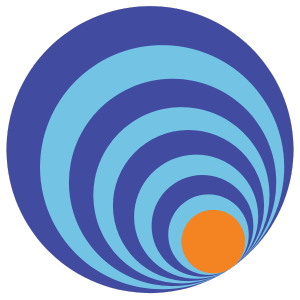Q1. Circular 02 of 2020 deals with:
A) Methane safety in underground mines
B) Systematic slope monitoring in opencast mines
C) Safe blasting practices
D) Railway siding safety
E) Dust monitoring
✅ Answer: B
Explanation: This circular provides guidelines for systematic slope monitoring to prevent slope/dump failures in opencast mines.
Q2. Slope failures in opencast mines can cause:
A) Roof fall accidents
B) Dump slides and bench collapse
C) Damage to HEMM & infrastructure
D) Fatal accidents to workers
E) All of the above
✅ Answer: E
Explanation: Slope failure is hazardous because it causes dump slides, bench collapse, machinery damage, and fatalities.
Q3. Which of the following is a factor in slope instability?
A) Weak geological strata
B) Water seepage & rainfall
C) Blasting vibrations
D) Poor design of benches
E) All of the above
✅ Answer: E
Explanation: All listed factors contribute to slope failure, especially in monsoon & weak strata.
Q4. Bench design parameters include:
A) Height of bench
B) Width of bench
C) Slope angle of bench
D) Catch benches
E) All of the above
✅ Answer: E
Explanation: Bench geometry depends on height, width, slope angle, and provision of catch benches.
Q5. Catch benches are provided to:
A) Drain water
B) Arrest falling rocks
C) Support blasting operations
D) Control dust
E) None of the above
✅ Answer: B
Explanation: Catch benches trap loose rocks and prevent them from rolling onto lower benches.
Q6. Drainage around slopes should include:
A) Garland drains
B) Sumps
C) Pumping systems
D) All of the above
E) None
✅ Answer: D
Explanation: All drainage measures are needed to keep slopes dry and stable.
Q7. Which instrument measures slope movement in real-time?
A) Extensometer
B) Ground-based radar
C) Piezometer
D) Inclinometer
E) None
✅ Answer: B
Explanation: Radar-based monitoring detects slope movement continuously and gives early warnings.
Q8. A piezometer is used to measure:
A) Slope angle
B) Water/groundwater pressure
C) Dust level
D) Rock temperature
E) Bench height
✅ Answer: B
Explanation: Piezometers measure pore water pressure, a key factor in slope stability.
Q9. An inclinometer is used to measure:
A) Vertical crack displacement
B) Angular tilt of slope
C) Water seepage
D) Gas content
E) None
✅ Answer: B
Explanation: Inclinometers monitor angular displacement/tilt of slopes.
Q10. An extensometer is used to measure:
A) Rock pressure
B) Slope crack movement/displacement
C) Dust in air
D) Gas concentration
E) None
✅ Answer: B
Explanation: Extensometers measure crack widening and slope displacement.
Q11. Ground-based slope radars are useful because:
A) They reduce dust
B) They provide real-time monitoring & alarms
C) They detect gas
D) They calculate production
E) None
✅ Answer: B
Explanation: Radars continuously scan slopes and provide real-time alerts.
Q12. Main responsibility for slope stability lies with:
A) Workers
B) Mine Manager
C) DGMS Inspector only
D) Contractors
E) None
✅ Answer: B
Explanation: Mine Manager is legally responsible for slope stability, supported by geotechnical engineers.
Q13. Which blasting method is safest near slopes?
A) Random blasting
B) Controlled blasting with delay detonators
C) Overcharging
D) Blasting without stemming
E) None
✅ Answer: B
Explanation: Controlled blasting minimizes vibration impact on slope stability.
Q14. Water seepage in slopes can be controlled by:
A) Drainage channels
B) Dewatering systems
C) Grouting
D) All of the above
E) None
✅ Answer: D
Explanation: All listed measures help reduce seepage & pore pressure.
Q15. During monsoon, slope failure risk increases due to:
A) Dust
B) Gas accumulation
C) Rainfall & water infiltration
D) High wind only
E) None
✅ Answer: C
Explanation: Water infiltration reduces slope shear strength, increasing risk.
Q16. Survey of slopes should be:
A) Done once every 5 years
B) Periodic & properly recorded
C) Optional
D) Done during accidents only
E) None
✅ Answer: B
Explanation: Regular survey & data recording are mandatory for slope safety.
Q17. Regulation covering slope stability in coal mines is:
A) Reg. 106–107, CMR 2017
B) Reg. 150, MMR 1961
C) Reg. 31, OMR 2017
D) Factory Act
E) None
✅ Answer: A
Explanation: CMR 2017 (Reg. 106–107) prescribes safety for benches & dumps.
Q18. Trigger levels in slope monitoring are used for:
A) Maintenance planning
B) Evacuation decision
C) Blasting permission
D) Dust control
E) None
✅ Answer: B
Explanation: If slope movement exceeds trigger level → workers evacuated.
Q19. Dumps in opencast mines should be:
A) Constructed systematically
B) Monitored like slopes
C) Properly drained
D) All of the above
E) None
✅ Answer: D
Explanation: Dumps require same safety as pit slopes.
Q20. Which person plays key role in slope design & monitoring?
A) Geotechnical engineer
B) Blaster
C) Electrical supervisor
D) Ventilation officer
E) None
✅ Answer: A
Explanation: Geotechnical engineer studies slope design & safety.
Q21. Radar slope monitoring provides advantage of:
A) Night-time & all-weather monitoring
B) Real-time alerts
C) Large coverage area
D) All of the above
E) None
✅ Answer: D
Explanation: Radars are accurate, 24×7, and give advance warnings.
Q22. Failure of external dump is considered:
A) Roof fall
B) Slope failure
C) Gas accident
D) Fire hazard
E) None
✅ Answer: B
Explanation: Dump failure is classified as slope failure.
Q23. A bench collapse affecting only one working place is called:
A) Overall slope failure
B) Bench failure
C) Dump slide
D) Controlled slide
E) None
✅ Answer: B
Explanation: Bench failure is localized slope failure.
Q24. Why is slope monitoring critical in opencast mines?
A) To increase production
B) To ensure slope safety and prevent accidents
C) To reduce manpower
D) To measure coal quality
E) None
✅ Answer: B
Explanation: Purpose is safety of men & machinery.
Q25. Main aim of Circular 02 of 2020 is:
A) Improve blasting output
B) Guidelines for systematic slope monitoring
C) Train electrical supervisors
D) Introduce mechanization
E) None
✅ Answer: B
Explanation: Objective = systematic monitoring of slopes in opencast mines.
✅ Memory Hack:
👉 “2 = 2 Sides of a Slope” → Circular 02 of 2020 = Slope Monitoring.


 Launch your Graphy
Launch your Graphy